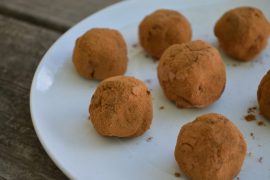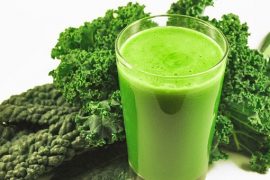Often times, solutions can be so simple that they get overlooked. Ileocecal valve massage is one of those solutions. Ileocecal valve massage has been found to be very effective for the relief of a wide range of gastrointestinal problems. Research has suggested that malfunction of this valve is a large contributor to gas, bloating, abdominal cramping, constipation and more (1).
Massaging the valve has been reported to help with issues such as colds, nausea, small intestinal bacterial overgrowth (SIBO), constipation, diarrhea and more due to the large impact that gastrointestinal health has on the entire body.
Another great perk about this finding is that it is absolutely free. Free, natural, and evidence based healing solutions are always worth a try!
What is the Ileocecal Valve?
The ileocecal valve connects the large intestine to the small intestine. The valve creates a barrier that allows each environment to support different temperatures, pH levels, microflora and digestive processes.
Essentially, this valve functions as a barrier between the large and small intestine. It prevents the backflow of harmful toxins and microbial overgrowth into the small intestine. It also prevents food from entering the large intestine before it is effectively digested (5).
Malfunction of the Ileocecal Valve
Problems occur when this valve is stuck open or closed.
Once food has been digested and is ready for passage into the large intestine, a closed ileocecal valve will result in constipation. When constipation occurs due to this valve being stuck closed, fecal matter and toxins are not able to get through the entrance into the large intestine.
Instead, these waste products are left in the small intestine and the function of the small intestine is to absorb. Therefore, these toxic waste products continue to be absorbed into the body, which can cause many health issues (5).
When the valve is stuck open, food can exit too quickly in the form of diarrhea and malabsorption of vital nutrients can result. In addition, bacteria from the large intestine can also migrate up into the small intestine causing bacterial overgrowth and the resulting health deterioration that goes along with that.
The Role of the Ileocecal Valve in SIBO
As mentioned above, research has supported that when the ileocecal valve is stuck open, this allows bacteria to proliferate up into the small intestine that would not normally have access to this area.
One study that was designed to find out if a malfunctioning ileocecal valve is related to small intestinal bacterial overgrowth, evaluated ileocecal valve pressures and lactulose breath readings. They also noticed correlations with patient symptoms that they were not expecting.
They used a colonoscopy procedure to evaluate the pressures and found that patients with a lower pressure and open valve, had positive lactulose breath readings and symptoms of fullness during meals, gas, and bloating. Patients with a higher pressure had negative lactulose breath readings and denied having any gastrointestinal symptoms.
The results of these studies show us that an open ileocecal valve is highly related to small intestinal bacterial overgrowth (3).
Another very similar study was conducted and the data replicated the results of the study mentioned above. The researchers concluded that malfunction of the ileocecal valve is a “prominent player in intestinal disorders” and should be considered in patients struggling with gastrointestinal complaints (1).
Small Intestinal Bacterial Overgrowth (SIBO)
SIBO occurs when there is overgrowth of bacteria from the large intestine up into the small intestine. The small intestine is less populated with gut microflora so when overgrowth occurs this can cause multiple symptoms such as:
- Gas
- Bloating
- Diarrhea &/or Constipation (less common than diarrhea)
- Abdominal pain or cramping
- Skin disorder such as eczema and rosacea
- Diagnosis of irritable bowel syndrome or inflammatory bowel disease
- Food intolerances such as gluten, casein, lactose, fructose and more
- Chronic illnesses such as fibromyalgia, chronic fatigue syndrome, autoimmune diseases, diabetes and neuromuscular disorders.
- B12 deficiency as well as other vitamins and minerals (iron and magnesium are common)
- Fat malabsorption (2).
What Can Cause Ileocecal Malfunction?
- Dehydration
- Any type of stress
- Eating too frequently
- Eating too quickly
- Food sensitivities
- Under-chewing your food
- Caffeine
- Carbonated drinks
- Alcohol
- Chocolate
- Hot spicy food (4)
- Appendix removal (5).
How to Locate and Massage the Valve?
In order to massage the valve, you can follow these steps. Keep in mind that placement may vary from person to person.
- Place your right thumb on your hip bone and your left thumb on your navel.
- The valve is located about halfway between the hip bone and belly button so imagine a line connecting these two points and find the middle.
- Take all of your fingers and place them about 3 inches below that middle point. You should be close to the ileocecal valve.
- Press in slowly but deeply and firmly. Search for the little tender hardened area and this is your valve. Some people find it easier while laying down.
- After you find it, being to massage it in a circular motion with medium pressure for five seconds.
- After the massage, form your hand into a fist and stimulate the reflex are located in the right front upper arm (close to your armpit) for 10 seconds. View the chart below for location visuals (4).
How Often To Do the Valve Massage
This can be done 3 times a day before meals as well as first thing in the morning and last thing before bed.
Also, keep in mind that the entire digestive tract is a muscular tube and is constantly contracting (peristalsis) and relaxing. Sometimes these muscles may show signs of cramping or have weak areas. This may present as gas, burping, or weird throat noises such as gurgling.
These signs can indicate that your valve needs support. The tenderness associated with the location of the valve may go away after a week or two of implementing this technique (4).
How to Close an Opened Valve?
An open valve will likely result in signs of small intestinal bacterial overgrowth or diarrhea. You can try closing the valve yourself by finding the valve and pushing in with your fingers. While you are pushing, pull up and toward the left shoulder for 3 minutes.
Placing an ice pack over the valve for 15-20 minutes may also help close the valve (5).
In addition, we suggest using Activated Charcoal to aid in stopping diarrhea. This supplement has the capability of binding materials and absorbing them like a sponge. It can absorb over 100 times its own weight in toxins and bind them so that they are excreted in stool. This is also our go to product for absorbing die off toxins of harmful pathogens in the gastrointestinal tract.
This is the protocol we use for diarrhea:
GI Regulator: 2 caps with meals
Gut Healing Protein: 2 scoops in shakes 1-2x daily
L-glutamine: 2 scoops in shake
Activated Charcoal: 2-4 caps 3x daily (outside of meals)
Do this until the diarrhea stops and then drop all dosages in half and continue for two weeks. This approach absorbs toxins, increases secretory IgA, aids in rebuilding the gut lining, kills off pathogens, and absorbs die off toxins.
How to Open a Closed Valve?
When constipation is experienced, try massaging the valve for several minutes as well as the reflex area in the right upper arm (5).
We have found the most effective product for constipation to be magnesium, as most diets are either deficient or the body is not absorbing this nutrient well. We use 200-800mg of magnesium in the form of magtein, magnesium L-threonate, and magnesium lysinate glycinate chelate.
These forms of magnesium have been proven to be the most absorbable. Most supplements containing magnesium are not absorbed efficiently by the body and can require excessive amounts to get the correct amount. Brain Calm Magnesium also contains magtein , which is the only form of magnesium shown to cross the blood brain barrier and improve brain function.
Other methods for relieving constipation include 8 ounces of unsweetened aloe vera juice, green juices with fresh ginger and lemon, increased amounts of fibrous vegetables, and ginger herbal teas. Ginger promotes bile secretion and detoxification from the liver as well as peristalsis throughout the gastrointestinal tract.
Steps for Maintaining a Healthy Valve
- Eliminate the toxic foods from the intestinal tract with garlic or chlorophyll
- Remove spicy foods (for at least a week) and remove alcohol, cocoa, chocolate and caffeine from the diet if you struggle with this problem.
- This last step is very important. To relieve symptoms quickly, rub the reflex points below for 10-20 seconds each. It is not beneficial to this for longer or shorter of a time period. The reflex points include the right upper front arm by armpit, outer and inner thighs of both legs on the front and back, the right side of the neck next to the spine and touching underneath the occipital bone of the skull, and the back of the right calf close to the knee.
Conclusion
The next time that you or someone you know, is struggling with symptoms of gastrointestinal distress or even flu like symptoms, try ileocecal valve massage and rubbing the associated reflex points suggested in this article (5). You may be pleasantly surprised from relief.
This article was written by Haley Gibson, BSN, RN, FDN. Haley is passionate about helping people overcome their health challenges through healthy lifestyle, nutrition and natural strategies.
Sources For This Article Include:
- Ciarleglio, MM, Clark, JO, Mullin, GE, Pasricha, PJ, Roland, BC, Semler, JR & Tomakin, E. (2014). Low Ileocecal Valve Pressure is Significantly Associated with Small Intestinal Bacterial Overgrowth (SIBO). Dig Dis Sci. 59(6): 1269-77. Doi: 10.1007/s10620-014-3166-7. Online Link
- Jockers, D. 14 Strategies to Beat SIBO Naturally. Online Link
- Kotapati, SK, Makipour, K, Miller, LS, Prabhu, S, Sampath, AM & Vegesna, AK. (2014) Ileocecal Valve Dysfunction in Small Intestinal Bacterial Overgrowth: A Pilot Study. World J Gastroenterol.18(46): 6801–6808. doi: 10.3748/wjg.v18.i46.6801. Online Link
- Tannenbaum, R. (2016). Ileocecal Valve Syndrome. Online Link
- Williams, D. (2016). How to Manipulate Your Ileocecal Valve for Better Health. Online Link
This article is shared with permission from our friends at Dr. Jockers’ .


















